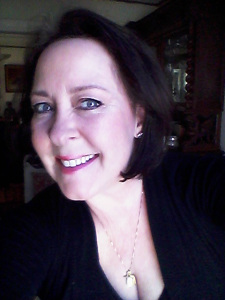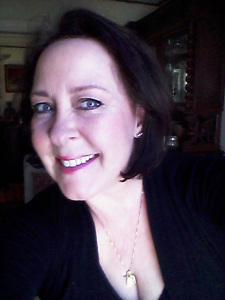Eleanor: Thank you for having me, Sahar. It’s such a pleasure to be here with you today.
Sahar: Eleanor, where to begin! Can you share with me how and when did you begin writing? Did you intend to become an author, or do you have a specific reason or reasons for writing, A Decent Woman?
Eleanor: For more than twenty-five years, I was an exhibiting painter before discovering my passion for telling stories. Actually, I told stories as a kid, and yes, some were embellished! A trip, a vacation, the school cafeteria—I used experiences in my daily life to tell stories. My kids joke that if you ask me how my day was, get ready for a story; quirky and interesting always happen around me. I suppose I pay attention to my surroundings and the people in it. Human behavior fascinates me.
Looking back, I should have known I’d become an author, but outside of painting, keeping a journey for decades, and writing poetry I never showed anyone, I never dreamed I’d write and publish a book. My debut novel, A Decent Woman, began as a tribute to my grandmother for her ninetieth birth. I was amazed by how much I knew about life in turn of the century Puerto Rico and about the lives of women in my hometown of Ponce, Puerto Rico.
My debut novel is a love letter to Puerto Rico, the island of my birth. I hoped to create and give voice to diverse characters, such as my protagonist, the Afro-Cuban midwife, Ana Belén, who was born into slavery. I wrote what I wanted to read, and I love reading books set in exotic locations with diverse characters. My friends didn’t know much about Puerto Rico and its’ rich history, so I wrote A Decent Woman.
Sahar: Tell us a little more about you . . . When you’re not writing, what else do you enjoy doing?
Eleanor: I’m a Puerto Rican-born, 58-year-old mother of two adult children who are doing rewarding and exciting things in the world. I used to say I was a single mother, but my kids are now in their thirties—this is more accurate. They live and work in Northern Virginia and the Netherlands, and I miss them every day.
When I’m not writing, I’m thinking about my stories and characters—an occupational hazard for a writer! I love to garden, paint, swim, take walks in nature, play with my animals, and spend time with my children and family. I write at my dining room table with a view of my flower garden and at my river place with a view of the West Virginia side of the Potomac River, a setting that always clears my mind and inspires me. Travel is high on my list, as well. My passport is always up-to-date.
Sahar: Do you write every single day, and do you have any particular writing rituals?
Eleanor: During autumn and winter, I write every day, whether it’s my work in progress, articles, or blog posts. In spring, and especially during the summer months, I take the weekends off to enjoy travel and my river place, which I love to share with family and friends.
My ritual before beginning a new book is to compile a relevant, inspirational musical playlist. I add and delete songs as I write, and the songs must be strictly instrumental or with lyrics in a language I don’t speak, so I’m not distracted by words. I don’t wear lucky writing socks, but I do enjoy writing in pajamas or comfy, draw-string pants.
Sahar: I know you love to travel, so where is the one place you would want to visit that you haven’t been before?
Eleanor: Yes, that’s right. I’d love to visit India. Many of my favorite authors are from India, and I’d love to experience the sights, smells, and sounds I’ve enjoyed through their books. India is a fascinating, complex country with a rich history. I could eat Indian cuisine every day, and I’m learning to prepare many of my favorite Indian dishes.
Sahar: Your book, A Decent Woman, what genre does it fall under?
Eleanor: Historical and literary fiction.
Sahar: Your novel, A Decent Woman, it is set in the turbulent 1900s—two years after the United States invasion on the shores of Guánica, Puerto Rico. What made you select this particular time setting and place to tell your story?
Eleanor: Since my character Serafina is loosely based on my maternal grandparents’ stories, I knew the story would be set in early 1900 Puerto Rico, their birthplace and mine. The specific timeframe, timeline, and characters of the story evolved as I refined my research, and when my characters spoke and pointed me in new directions, I rewrote the story.
I was interested in how the Puerto Ricans who remained on the island dealt with the changes of American colonial rule after being a Spanish colony for so long, and what the challenges women faced during that time might be.
Sahar: Your book speaks about the need for social change, the struggles against misogyny, and chauvinism, and the journey to find dignity. How do you think this story relates to the struggles experienced by women still today? How is it different?
Eleanor: In many parts of the world today, including the United States, women live in male-dominated societies, where they still struggle against abuse, misogyny, and chauvinism on a daily basis. Through my research, I discovered that women of the past were no different from you and me—we deal with the same issues in our love relationships, our families, in the workplace, and with our children. Most American women today have modern conveniences and more opportunities in life, but behind some closed doors, the same struggles exist and incidents of abuse are still present. For women, the journey of finding dignity in a complex and fast-paced, challenging world is at times, a daily challenge, even today.
I didn’t set about to write, as my novel has been called, “a feminist novel”. It evolved. I believe when we know or discover truth, we shouldn’t hide behind it or ignore it. Truth is a gift. And if we deny a truth, it will most certainly revisit us again until we acknowledge it. The abuses Puerto Rican women, black and white, rich and poor, suffered and endured by society and men were glaringly obvious to me—I couldn’t turn my back. These women needed a voice.
Sahar: How important are names to you in your book? Do you choose the names based on liking the way it sounds or for the meaning?
Eleanor: The names of my characters in A Decent Woman and The Island of Goats are names that were prevalent and popular in turn of the century Puerto Rico, which I found in census reports of the era, and many names I’ve used are those of family members. Using their names or nicknames links my family to my book forever, which I find very special.
Sahar: Your book cover is very poignant. Can you tell us a little about it?
Eleanor: Thank you. After several attempts and false starts of using images found online, I decided to take my own photograph so as to eliminate the copyright and legalities of using those images. The image on my book cover is that of a wood statue I own of the Virgin Mary of Montserrat, a black Madonna. I purchased the statue in Lourdes, France, during one of my volunteer weeks in the Catholic sanctuary of Lourdes, where I worked as a piscine lady (bath maiden) for over thirteen years. The statue is precious to me. I’d walked by that statue for over ten years before discovering the Madonna’s connection to my character Ana, who was devoted to the Virgin Mary and to the Yoruba religion goddess, Yemaya, the goddess of maternity and the sea.
Sahar: What book or books have had a strong influence on you or your writing?
Eleanor: Books on writing by Julia Cameron, Stephen King, and Natalie Goldberg have influenced my writing over the years, as well as the books and writing website by award-winning authors, Jack Remick and Robert Ray, which has become my writing Bible. I highly recommend the website to writers—it’s like taking writing classes from two Master storytellers.
The books that have influenced and inspired me are many! The Awakening-Kate Chopin, Gabriela and the Widow-Jack Remick, The Poisonwood Bible-Barbara Kingsolver, Sister of My Heart-Chitra Banerjee Divakaruni, Anna Karenina-Leo Tolstoy, Girl with a Pearl Earring-Tracy Chevalier, Stones From the River-Ursula Hegi, and Pride and Prejudice-Jane Austen.
Sahar: Eleanor, what are you working on right now? What is your next project?
Eleanor: I am currently writing my second book, The Island of Goats, set in turn of the century Puerto Rico, southern Spain, and the south of France. The sequel to A Decent Woman called Mistress of Coffee comes next, along with the Spanish-language translation of A Decent Woman, which I’m keen to begin.
Thanks again for inviting me to visit with you, Sahar. It’s been a real pleasure. I wish you blessings and happy writing. Eleanor
About Eleanor Parker Sapia
Puerto Rican-born novelist, Eleanor Parker Sapia, was raised in the United States, Puerto Rico, and Europe. Eleanor’s careers as an artist, counselor, alternative health practitioner, Spanish language social worker and a refugee case worker inspire her stories. She is a member of Las Comadres Para Las Americas, PEN America, and the Historical Novel Society. When Eleanor is not writing, she facilitates creativity groups, reads, and tells herself she is making plans to walk El Camino de Santiago de Compostela a second time.
A Decent Woman is Eleanor’s debut novel, set in turn of the nineteenth century Puerto Rico. The book was selected as 2015 July Book of the Month for Las Comadres & Friends Latino Book Club. Eleanor is the mother of two adult children and currently lives in West Virginia, where she is happily writing her second novel, The Island of Goats.
Website [s]: http://www.eleanorparkersapia.com
Blog: http://www.thewritinglifeeparker.wordpress.com
Facebook Author Page: http://www.facebook.com/eleanorparkersapia
Twitter: @eleanorparkerwv
Sahar: Where can we purchase your book[s]?
Eleanor: A Decent Woman is available for Kindle and in paperback on Amazon.
amazon.com/-/e/B00U05ZO9M
Barnes & Noble for Nook and in paperback.
http://www.barnesandnoble.com/w/a-decent-woman-eleanor-parker-sapia/1121258236?ean=9781620154007
La Casa Azul Bookstore 143 E. 103rd Street New York, NY 10029 (212) 426-2626 info.lacasaazul@gmail.com
Wishing you the very best, Eleanor Parker Sapia with all you set out to do, and a BIG Thank You for visiting! Your work is an inspiration. ~ Sahar



















